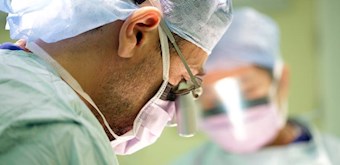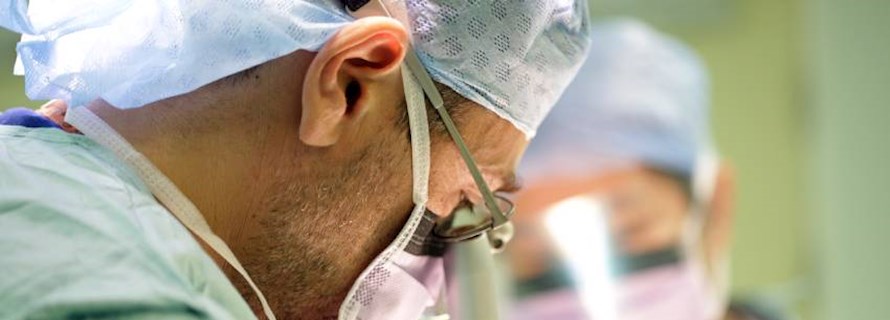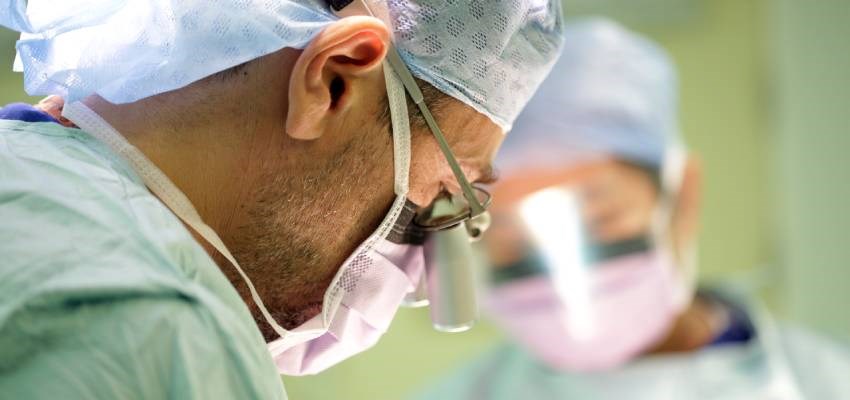Resection of nerve tumours
Removal of schwannomas
Our leading nerve surgeon carries out this complex procedure at our Peripheral Nerve Unit
About having nerve tumours removed
In these cases, the nerve may be opened up so that the tumour can be removed.
Each procedure is carried out using a surgical microscope, so that the surgeon can determine which tissue is part of the tumour and which tissue is healthy.
Most peripheral nerve tumours are benign (not cancerous), but can occasionally be malignant (cancerous). A common type is a malignant peripheral nerve sheath tumour (PNST) which can grow in the lining of the nerves in the spinal cord.
Both types of tumour can grow anywhere in the body and can cause pain, numbness and loss of function.
Need to know
-
What happens during resection of nerve tumours? icon plus
Treatment varies according to the location of growth. If a patient has a tumour in the spinal cord they may need a vertebrae removed first (laminectomy) before the surgeon can access the spinal nerves. Where a tumour grows within a nerve, a resection is carried out. Here, the section of nerve containing the tumour is removed, and the remaining nerve end is reattached.
If the nerve isn't long enough, a healthy nerve may be taken from somewhere else and used to reattach the nerve to the muscle. If a tumour is growing in a limb, it may be necessary to remove surrounding muscle and bone. Here, rods and screws may be used to provide support. -
How to prepare for a nerve resection icon plus
Your consultant will explain the procedure to you and answer any questions you may have. Because you'll be having general anaesthetic, they'll let you know how long you should avoid eating and drinking before surgery.
Like all procedures, there may be some risks and side effects involved. Your consultant will explain these to you. -
After surgery icon plus
Your consultant will let you know when you can get back to your usual routine, including work and exercise. If your tumour is cancerous, you will also see an oncology team. They will support you through your treatment, which may include radiotherapy and chemotherapy.
Mr Marco Sinisi - Peripheral Nerve Specialist
At HCA Healthcare UK, we work with leading consultants to enable access to the the latest techniques and treatment.
Mr Marco Sinisi is our lead consultant for Peripheral Nerve Injuries based at The Wellington Hospital. Mr Sinisi has a comprehensive knowledge of nerve injuries and has experience in a wide range of nerve problems from trauma through to sports injuries. He is experienced in managing complex nerve conditions as well as performing complex nerve operations.




Our locations
From complex nerve surgery to diagnostic tests and procedures, we provide exceptional peripheral nerve care across our network of hospitals, outpatient centres and specialist clinics.
-
Peripheral Nerve Injury (PNI) Unit
The PNI Unit at The Wellington Hospital
Wellington Place
London NW8 9LE
-
The Wellington Hospital Elstree Waterfront
The Waterfront Business Park
Beaufort House, Elstree Road
Elstree WD6 3BS
Book a peripheral nerve appointment
We're happy to help you make an appointment with Mr Marco Sinisi. We can also make imaging and outpatient physiotherapy appointments for you.
Call us today
020 7079 4344